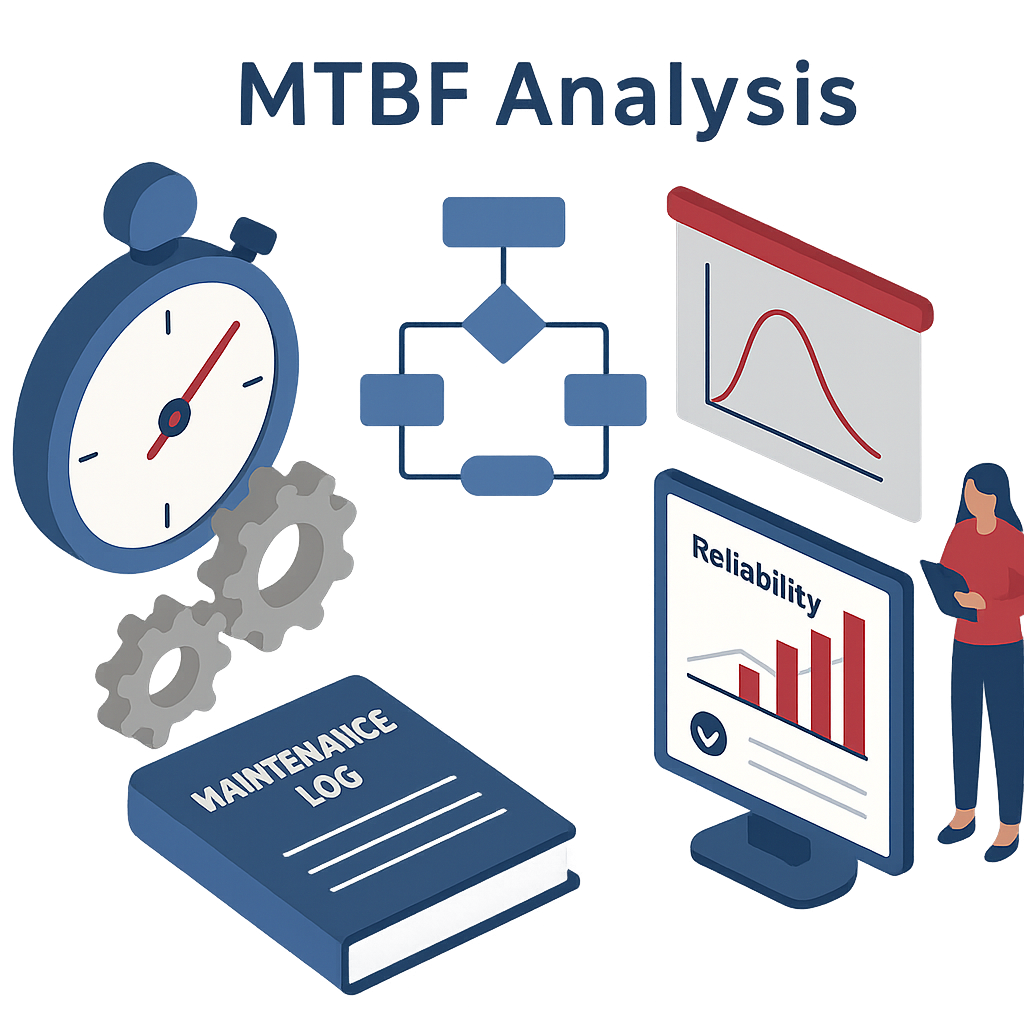MTBF ANALYSIS Services
Proven Reliability Through MTBF Analysis
Data-Driven Failure Modeling for Industrial & IoT products to optimize design, warranty, and maintenance


What We Offer
At Culine, we deliver Mean Time Between Failures (MTBF) analysis to predict and improve product reliability. Using MIL-HDBK-217F, Telcordia SR-332, and IEC 61709, we combine parts-count/parts-stress models with real FIT rates, temperature and duty-cycle profiles, and environment (GB/GF/GM). You receive clear FIT & MTBF (hours) estimates, assumptions, confidence levels, and DfR actions—component derating, thermal improvements, and design updates—plus a concise report and reliability block diagram. Ideal for PCBA, power electronics, IoT, industrial, and medical devices from prototype to production.
MTBF Analysis & Reliability Engineering
We calculate Mean Time Between Failures (MTBF) for PCB assemblies and embedded devices using field data, accelerated life tests (HALT/HASS), and Weibull/Exponential models. Results include failure-rate (FIT) estimates, confidence bounds, and design actions to boost uptime and reduce warranty cost.
MTBF Prediction for Industrial & IoT Products
Data-driven MTBF forecasting tailored to harsh environments. We map real-world stress profiles, identify weak components, and set preventive-maintenance intervals—improving asset reliability, lowering lifecycle cost, and supporting audits and certifications.
Failure Rate & Weibull Reliability Modeling
Quantify reliability with Weibull shape/scale parameters, FIT rates, and mission-profile analysis. Get a clear report with assumptions, test coverage, and DfR recommendations so you can prioritize redesigns, spare strategies, and service plans with confidence.
Standards-Based MTBF Calculation (MIL-HDBK-217F & Telcordia SR-332)
We compute MTBF using MIL-HDBK-217F and Telcordia SR-332 parts-stress methods, tailored to your environment (temperature, duty cycle, load). Deliverables include FIT/λ, confidence levels, and a bill-of-materials risk map for fast engineering decisions.
Warranty & Service Optimization Using MTBF
Translate MTBF into spare-parts planning, warranty reserves, and preventive-maintenance intervals. We model field failure rates, seasonality, and usage profiles to cut downtime, reduce service cost, and improve SLA compliance for Industrial & IoT fleets.
MTBF analysis estimates the reliability and expected uptime of your electronics (PCB assemblies, embedded/IoT devices) using lab, field, and stress data. We baseline failure rate (λ) from component-level models (MIL-HDBK-217F, Telcordia SR-332) and validate with Weibull fits so your MTBF reflects real mission profiles—temperature, load, and duty cycle.
What goes into the calculation
-
Inputs: operating hours, number of failures, environment/stress factors, BOM parts-stress data
-
Outputs: MTBF, FIT, reliability over time R(t), and system MTBF for series/parallel blocks
-
Uses: maintenance intervals, warranty reserves, spare planning, and Design-for-Reliability (DfR) decisions
MTBF Calculation: Formula, Failure Rate (λ), and System MTBF
Calculate Mean Time Between Failures (MTBF) to predict reliability of PCB assemblies and IoT devices.
Core formula: MTBF = Total Operating Time ÷ Number of Failures.
Exponential model: λ (failure rate) = 1/MTBF; Reliability R(t) = e^(−t/MTBF); FIT = (1/MTBF) × 10⁹ (failures per billion hours).
Systems: For independent series elements, failure rates add → 1/MTBF_system = Σ(1/MTBFᵢ). For redundant/parallel designs, use Reliability Block Diagrams to combine R(t) of each path.
Deliverables: audit-ready MTBF worksheet, assumptions & confidence bounds, and design/maintenance actions to improve uptime and reduce lifecycle cost.

Where We Apply MTBF Analysis
Our reliability modeling (MTBF, FIT, Weibull) supports high-duty, safety-critical electronics across these domains:
